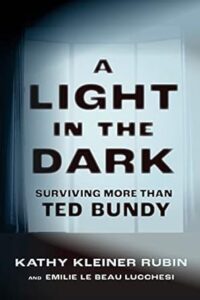Explore the chilling story of Ted Bundy, one of America’s most infamous serial killers. Dive into his life, crimes, and the investigation that led to his capture.
A Fractured Foundation: What Happened to Ted Bundy in His Early Life?
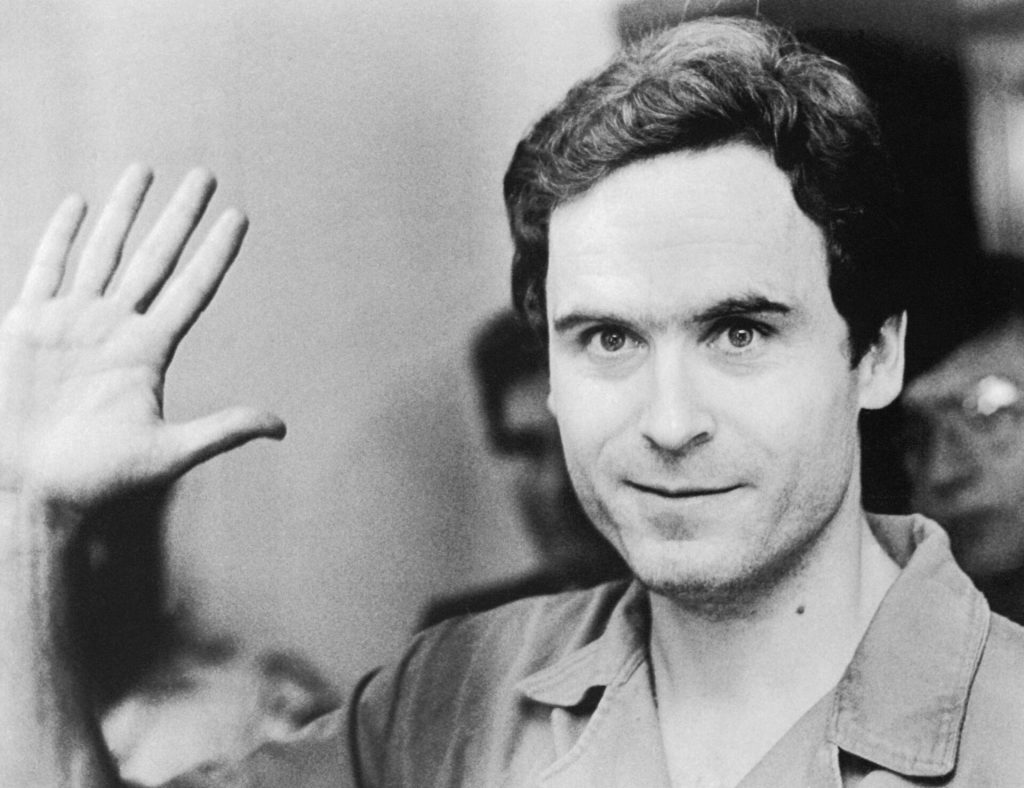
Who was Ted Bundy?
In the annals of criminal history, few names evoke as much chilling fascination as Ted Bundy. Born Theodore Robert Cowell in 1946, his formative years were marred by a series of emotional and psychological wounds that would ultimately shape his twisted path. His childhood, while outwardly appearing ordinary, was plagued by a profound lack of parental guidance and a pervasive sense of isolation. Raised by his grandparents, who he believed to be his parents until his teenage years, Bundy was deprived of a stable and nurturing environment. His true parentage remained a mystery for much of his life, adding to his feelings of abandonment and confusion.
Ted’s emotional needs were neglected, and he lacked the guidance and support necessary for healthy emotional development. This absence of parental figures left him feeling adrift and disconnected, unable to form meaningful bonds or develop a sense of belonging. The emotional void within him grew wider with each passing year, festering into a deep-seated anger and resentment towards the world.
His feelings of isolation were further compounded by his introverted nature and his difficulty forming genuine connections with others. Ted Bundy often felt misunderstood and alienated, unable to express his true emotions or find solace in the company of others. This sense of alienation fueled his resentment, leading him to view the world as a hostile and uncaring place.
The cumulative effect of these experiences created a fertile ground for the development of his dark fantasies and violent tendencies. He sought solace in pornography, which further warped his perception of relationships and fueled his misogynistic views. The anger and resentment he harbored towards the world, coupled with his twisted fantasies, eventually manifested in a horrifying series of crimes that would shock the nation.
After completing high school, Ted pursued higher education at the University of Washington, where he studied psychology. His academic pursuits seemed to solidify the image of a promising young man on the path to success. However, beneath the veneer of normalcy and ambition lurked a dark and sinister reality. Unbeknownst to those around him, he harbored a deep-seated fascination with violence and a twisted desire for control. The seeds of his future crimes were sown in the shadows, hidden from the prying eyes of friends and family. As his outward life continued to flourish, his inner demons grew stronger, eventually culminating in a reign of terror that would shock the nation.
Eleanor Louise Cowell & Johnnie Culpepper Bundy
Ted Bundy’s mother, Eleanor Louise Cowell, was born in 1924, giving birth to him out of wedlock and initially raising him as her younger brother to avoid the stigma of unwed motherhood.
Eleanor and Ted eventually moved to Tacoma, Washington where she met Johnnie Culpepper Bundy. He and Eleanor married in 1951, having four more children together, making Ted the eldest of five siblings. Johnnie formally adopted Ted, changing his surname from Cowell to Bundy.
Johnnie worked as a hospital cook and tried to include Ted in family activities, such as camping trips. However, Ted remained distant from him and resented his stepfather throughout his life. Ted’s animosity towards Johnnie stemmed from various factors, including his perception of Johnnie’s lack of success and their contrasting personalities.
Despite Ted’s difficult behavior, Johnnie remained committed to his role as a father figure. He provided for the family and tried to instill values in Ted, but their relationship remained strained. Johnnie’s attempts to connect with Ted were often met with resistance and resentment, leaving him feeling frustrated and helpless.
Johnnie Culpepper Bundy passed away in 2007. While his name is often overshadowed by the notoriety of his stepson, he played a significant role in Ted’s life. Although their relationship was fraught with tension and conflict, Johnnie’s presence in Ted’s formative years undoubtedly shaped his development, albeit in complex and perhaps negative ways.
A Love Affair with a Monster: Elizabeth Kloepfer and Ted Bundy’s Twisted Relationship
In the fall of 1969, Ted Bundy met Elizabeth Kloepfer, a divorced single mother, at a Seattle tavern. Ted was charming and good looking, quickly captivating Elizabeth, and they embarked on a passionate relationship.

Overtime, their relationship became tumultuous, marked by Ted’s frequent disappearances, mood swings, and suspicious behavior. Elizabeth, deeply in love and blinded by his charm, overlooked these red flags, attributing them to his busy schedule and personal struggles. However, as the disappearances of young women in the area continued, her suspicions began to grow.
She noticed strange items in Ted’s possession, such as a meat cleaver and surgical gloves, and overheard him having late-night phone conversations with unknown women. The growing unease led Elizabeth to contact the police multiple times, expressing her concerns about Ted’s possible involvement in the crimes.
Despite her suspicions, she remained in a relationship with him for several years. Their bond was complex, fueled by a mix of love, fear, and denial. Ted, in turn, used Elizabeth as a cover for his nefarious activities, exploiting her trust and affection to maintain his facade of normalcy.
The Politician’s Mask: Ted Bundy’s Calculated Deception in the Political Arena
In 1973, Ted Bundy seamlessly integrated himself into the political landscape of Washington state, projecting the image of a driven and well-connected aspiring politician. His charm, intelligence, and persuasive nature made him a valuable asset to Governor Dan Evans’ re-election campaign, where he quickly gained the trust and admiration of his colleagues. Ted’s ability to network and build relationships with influential figures gave him a sense of power and legitimacy, further fueling his grandiose delusions.
He reveled in the attention and admiration he received from his political peers, attending campaign events, mingling with prominent politicians, and even offering his insights on policy issues. He crafted a narrative of a young man destined for greatness, hinting at potential appointments to prestigious positions and boasting of his bright future in politics. This carefully curated image of a rising star masked the dark reality of his personal life.
Behind the scenes, Ted was struggling to maintain his veil of normalcy. His law school studies were suffering, and his grades were mediocre at best. He was often absent from classes, preoccupied with his morbid fantasies and the pursuit of his next victim. The demands of his double life—the aspiring politician by day and the serial killer by night—were taking a toll on his mental and emotional state.
Despite these challenges, he was determined to maintain his charade. He knew that his political connections and the image he had cultivated were crucial to his ability to operate undetected. By associating with influential figures and maintaining a veneer of respectability, he could deflect suspicion and continue his reign of terror without arousing alarm.
Ted’s ability to compartmentalize his life and maintain a convincing facade is a testament to his manipulative nature and his mastery of deception. He was able to separate his political aspirations from his dark desires, allowing him to function in both worlds, seamlessly transitioning from the charming campaign worker to the ruthless predator.
The Awakening of a Monster: Karen Sparks’ Harrowing Ordeal and the Unveiling of Ted Bundy’s Malevolent Darkness
The exact origins of Ted’s murderous spree remain shrouded in a chilling ambiguity, with whispers of earlier victims and unconfirmed suspicions lingering in the shadows. However, the brutal assault on Karen Sparks in January 1974 stands as the first documented chapter in his reign of terror, a harrowing ordeal that unveiled the depths of his malevolent darkness.
Karen, an 18-year-old student at the University of Washington, was living in a basement apartment near the university campus when her life was irrevocably shattered. Ted, a seemingly charming and handsome young man, approached her under the guise of needing assistance with his car. She was trusting and unaware of the danger lurking beneath his polished exterior, allowing him into her home, sealing her fate.
In a horrifying display of violence, Ted Bundy attacked Karen with a metal rod ripped from her bed frame, striking her repeatedly in the head and face. The assault was merciless and unrelenting, leaving Karen battered and bloodied. Ted then subjected her to a horrific sexual assault, inflicting further physical and emotional trauma upon his helpless victim. Finally, believing her to be dead, he left her unconscious and alone in the darkness of her apartment.
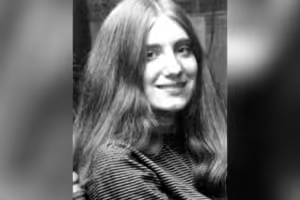
Miraculously, Karen clung to life, her faint pulse a testament to her resilience. Discovered the following morning, she was rushed to the hospital, where she underwent emergency surgery and extensive medical treatment. Though she survived the attack, the consequences were devastating. Karen suffered permanent brain damage, partial paralysis, and endured years of grueling rehabilitation. The physical and emotional scars of that night would haunt her for the rest of her life.
The attack on Karen marked a chilling turning point in Ted’s criminal career. It was the moment his monstrous urges first manifested in a documented act of violence, setting the stage for a reign of terror that would span multiple states and claim the lives of countless young women. The brutality and calculated nature of the attack foreshadowed the chilling pattern of his future crimes, revealing a predator who derived pleasure from inflicting pain and suffering on Ted Bundy victims victims.
The attack on Karen was not just a crime; it was a wake-up call to a nation that a monster was lurking in its midst, a monster who would continue to prey on the innocent for years to come.
The Vanishing of Lynda Ann Healy: Ted’s Second Documented Victim
Lynda Ann Healy was a 21-year-old student at the University of Washington who disappeared from her basement bedroom in the early hours of February 1, 1974. Ted, who had been stalking the campus for weeks, is believed to have broken into her apartment while she was sleeping and abducted her.
Her disappearance sparked a massive search, but no trace of her was found for months. It wasn’t until years later, her skull and mandible were discovered on Taylor Mountain, along with the remains of several other Ted Byndy victims.
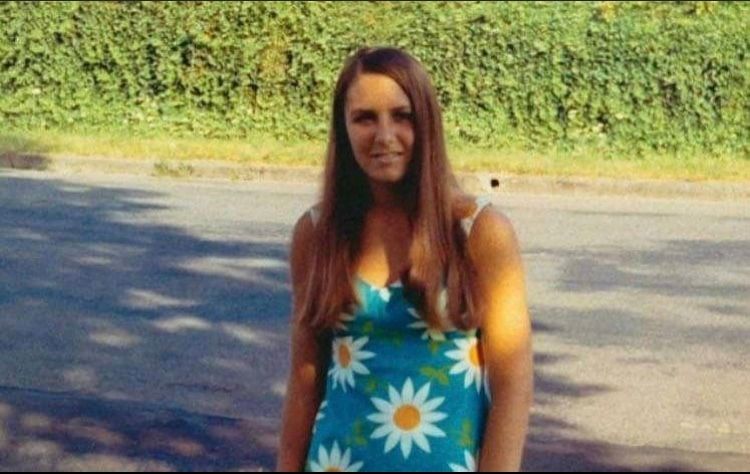
Lynda’s case was a turning point in the investigation, as it marked the beginning of a pattern of missing young women in the Pacific Northwest. It also highlighted Ted’s ability to blend in and operate undetected, preying on unsuspecting victims who trusted his charming demeanor.
The Pacific Northwest Prey: Ted’s Descent into Darkness
Ted targeted young women, often college students, who were unsuspecting of the evil lurking beneath his charming facade. His charisma and good looks proved to be deadly weapons, as he effortlessly lured his victims into a false sense of security. He would approach them with a disarming smile, feigning injuries or posing as an authority figure to gain their trust and exploit their vulnerability.
Once he had gained their confidence, Ted would unleash his true nature, abducting, raping, and ultimately murdering his victims. His modus operandi was a chilling testament to his cunning and manipulative nature. He would often use ruses such as pretending to have a broken arm or wearing a sling to appear harmless and in need of assistance. In other instances, he would impersonate police officers or firefighters, exploiting the trust people placed in these figures of authority.
Ted also went to great lengths to create situations where he could appear to need help. For example, he might approach a woman on crutches, asking her for help carrying books or unloading groceries from his car. He might even feign car trouble, requesting assistance from a woman who was alone. These carefully constructed scenarios played on people’s natural inclination to be helpful, making it all the easier for Ted to lure his victims away from safety.
His manipulation extended beyond his initial interactions with his victims. He was also known for meticulously planning his crimes, often revisiting the crime scenes to further abuse and torment his victims after they were dead. This chilling behavior spoke to a deep-seated sadism and a perverse desire for control that extended far beyond the act of murder itself.
Ted Bundy victims were not just statistics; they were vibrant young women with dreams and aspirations, tragically cut short by a predator who preyed on their kindness and trust. The impact of Ted’s crimes on the Pacific Northwest was profound, as a wave of fear and paranoia swept through communities.
A Survivor’s Testimony: Carol DaRonch’s Pivotal Role in Unmasking Ted Bundy
In August 1975, the seemingly endless search for the elusive predator terrorizing the Pacific Northwest took a dramatic turn. A young woman named Carol DaRonch, who had miraculously escaped an abduction attempt the previous year, stepped forward with a chilling account that would prove pivotal in unraveling the Ted Bundy mystery.

Carol had been approached by Ted in a Utah mall parking lot, where he posed as a police officer investigating a car theft. He lured her into his Volkswagen Beetle under the pretense of needing to file a report at the station. However, Carol quickly realized something was amiss when Ted deviated from the route and attempted to handcuff her.
In a moment of sheer terror and adrenaline, Carol fought back, managing to open the car door and escape into the night. Her harrowing experience left her deeply traumatized, but it also provided investigators with a crucial eyewitness account and a detailed description of both Ted and his vehicle.
Carol’s description, coupled with a composite sketch based on her recollection, aligned eerily with the profile investigators had been piecing together from other witness accounts. The Volkswagen Beetle she described matched the one seen near several crime scenes, and Ted’s physical appearance fit the description provided by other women who had encountered him.
Her courageous testimony not only identified Ted as her attacker but also connected him to other unsolved cases in the region. It was a critical breakthrough that helped law enforcement zero in on him.
Carol DaRonch’s willingness to speak out against her attacker not only helped bring a dangerous predator to justice but also empowered other survivors to come forward, shedding light on the extent of Ted’s crimes.
The Disappearance and Tragic Discovery of Caryn Campbell
In the serene winter wonderland of Snowmass Village, Colorado, a chilling mystery unfolded in January 1975 when 23-year-old Caryn Campbell, a vibrant nurse from Michigan, vanished without a trace.

Caryn was enjoying a ski vacation with her fiancé when she was last seen leaving her hotel room at the Wildwood Inn to briefly retrieve a magazine from a friend’s room just down the hall. She stepped into the dimly lit corridor, her cheerful demeanor masking the impending horror that awaited her.
As minutes turned into hours and then days, Caryn’s absence became increasingly worrisome. A massive search effort was launched, with local authorities, volunteers, and even trained search dogs combing the vast snowy landscape surrounding the resort. Days turned into weeks, and hope dwindled with each passing hour. The once-picturesque ski village was now shrouded in a somber atmosphere of uncertainty and fear.
After a month of agonizing suspense, Caryn’s lifeless body was discovered on February 17, 1975, discarded like a forgotten object alongside a desolate dirt road outside the resort. The gruesome sight that awaited investigators painted a picture of unimaginable violence. Her body bore the marks of a brutal assault, with severe blunt force trauma to the head as the primary cause of death. Further examination revealed signs of a struggle, indicating that she had fought valiantly for her life. The presence of sexual assault added another layer of horror to the already devastating discovery.
The investigation into Caryn’s murder was met with numerous challenges. The remote location of the body, the harsh winter conditions, and the lack of witnesses hindered the collection of evidence and the identification of potential suspects. Despite their tireless efforts, law enforcement was unable to make any significant headway in the case, leaving Caryn’s family and friends grappling with unanswered questions and a profound sense of loss. For years, the mystery surrounding her murder remained unsolved, casting a long shadow over the once-idyllic ski resort.
How Many Times Did Ted Bundy Escape?
In 1975, Ted’s bloody reign was temporarily halted when he was apprehended in Utah. A highway patrol officer noticed Ted driving suspiciously late at night and pulled him over. Upon searching the vehicle, the officer found a ski mask, handcuffs, rope, and other disturbing items, raising suspicions of Ted’s involvement in the recent disappearances of young women in the area.
He was subsequently arrested and charged with kidnapping and assault. However, his cunning and resourcefulness allowed him to manipulate the legal system and orchestrate a daring escape in 1977. During a pre-trial hearing in Aspen, Colorado, Ted acted as his own attorney and was granted access to the courthouse library. Seizing an opportune moment when he was unsupervised, he jumped out of a second-story window, disappearing into the wilderness.
His escape sparked a massive manhunt, with law enforcement agencies across the country scrambling to recapture him. He remained at large for several days, surviving in the rugged terrain and relying on his survival skills honed during his childhood in the outdoors. However, his freedom was short-lived as he was eventually apprehended while driving a stolen car, bringing his first escape to an end. This incident showcased Ted’s cunning and ability to manipulate situations to his advantage, further solidifying his reputation as a dangerous and elusive criminal.
In 1977, Ted meticulously planned his second escape, demonstrating his unwavering determination and resourcefulness. Over time, he shed a significant amount of weight, making it easier to squeeze through tight spaces. He also carefully studied the jail’s layout and routines, identifying vulnerabilities in the security system.
On December 30, 1977, Ted put his plan into action. Taking advantage of the holiday season when security was lax, he slipped through a small opening he had created in the ceiling of his cell. He crawled through the ceiling space, navigated the building’s ductwork, and eventually emerged through a closet in the jailer’s apartment. Dressed in the jailer’s clothes, Ted walked out of the jail undetected.
His second escape was a major embarrassment for law enforcement and sparked a nationwide manhunt. He remained at large for over a month, traveling across several states and leaving a trail of stolen vehicles and credit card fraud in his wake.
His ability to escape not once, but twice, from custody cemented his reputation as a cunning and resourceful criminal. It also highlighted the challenges of incarcerating a high-profile and manipulative individual like Ted, who was determined to evade capture and continue his killing spree.
The Chi Omega Massacre: Serial Killer in in Fla.
In the early morning hours of January 15, 1978, Ted unleashed a wave of terror at the Chi Omega sorority house at Florida State University in Tallahassee. Armed with a club, he entered the house through an unlocked door and proceeded to bludgeon and strangle two young women, Margaret Bowman and Lisa Levy, in their beds.

His rampage didn’t stop there as he continued through the house, attacking two other sorority sisters, Kathy Kleiner and Karen Chandler, in their room. Both women suffered severe injuries but miraculously survived the brutal assault. A few blocks away, Ted also attacked Cheryl Thomas, a dance student, in her apartment, leaving her with permanent injuries.
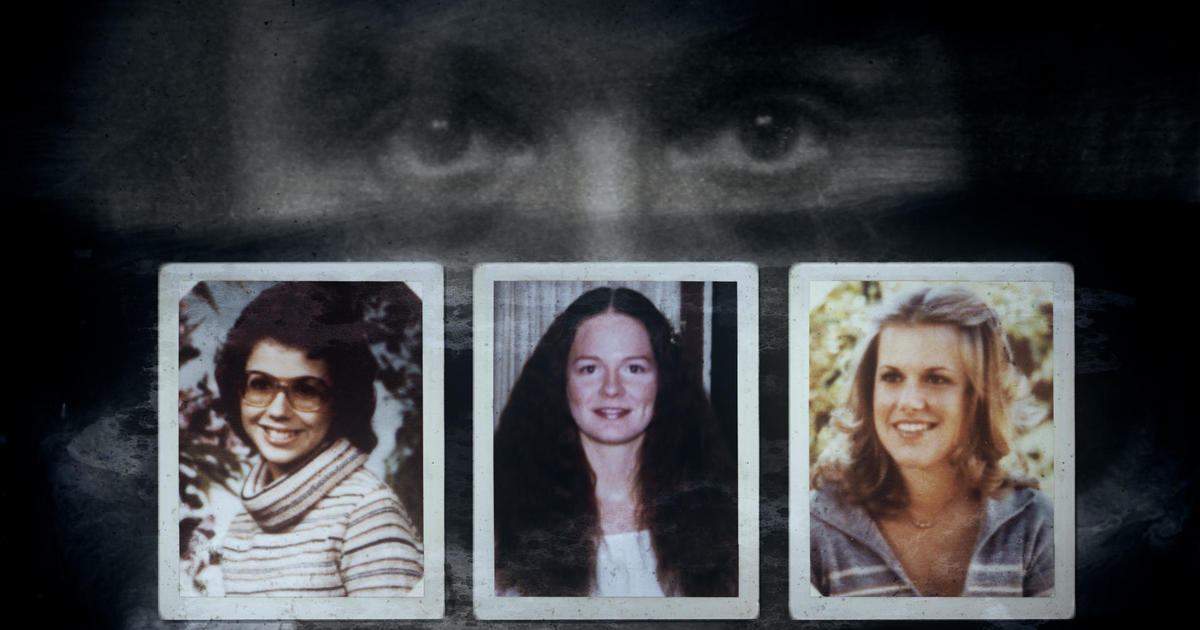
The Chi Omega massacre marked a new level of brutality in Ted’s killing spree. The random nature of the attacks, the sheer violence inflicted, and the fact that he targeted multiple victims in a single location sent shockwaves through the community and the nation.
This horrific event led to a massive manhunt, with law enforcement agencies scrambling to apprehend the elusive killer. Despite the brutality of the Chi Omega attacks, Ted’s murderous spree did not end there. In the weeks following the Tallahassee massacre, he continued to prey on young women, leaving a trail of devastation in his wake.
Kimberly Leach
On February 8, 1978, just weeks after the Chi Omega murders, Ted attempted to abduct a 14-year-old girl in Jacksonville but was interrupted and forced to flee. However, his thirst for violence remained unquenched.
The following day, he kidnapped and murdered 12-year-old Kimberly Leach in Lake City, Florida. She was his final known victim, and her abduction and murder were particularly heinous as he lured her away from her school, sexually assaulted her, and brutally murdered her before discarding her body in a pigpen.

The Final Pursuit: A High-Speed Chase Ends Bundy’s Reign of Terror
On February 15, 1978, a police officer in Pensacola spotted a stolen Volkswagen Beetle matching the description of a vehicle seen near the Chi Omega house. The officer attempted to pull the car over, but Ted being the ever cunning fugitive refused to stop, initiating a high-speed chase through the streets of Pensacola.
The chase was a heart-pounding spectacle, with Ted weaving through traffic, running red lights, and narrowly avoiding collisions. Police cars and helicopters pursued him relentlessly, their sirens blaring and lights flashing, creating a chaotic scene that gripped the nation.
Ted’s desperate attempt to evade capture ultimately proved futile. After a brief but intense pursuit, he was cornered and apprehended by the police. As handcuffs were placed on his wrists, the violent rampage that had gripped the nation finally came to an end.
The Charismatic Killer Takes Center Stage: Ted’s Media Circus and Arrogant Demeanor
Following his capture in 1978, Ted became a media sensation, captivating the nation with his good looks, intelligence, and chillingly calm demeanor. The cameras followed him everywhere, capturing his every move, every smirk, and every word. Ted was seemingly relishing the attention, playing the role of the charming defendant, often acting as his own attorney and showcasing his legal knowledge.
His arrogance was palpable as he reveled in the spotlight, granting interviews and engaging in debates with reporters. He maintained his innocence, denying any involvement in the murders, and portrayed himself as a victim of circumstance. This brazen display of arrogance further fueled public fascination with the case, turning the trial into a media circus.
Newspapers and television stations eagerly covered every development, dissecting his every word and gesture. Ted’s image became ubiquitous, appearing on magazine covers and dominating news cycles. His charm and charisma, which had once served him so well in manipulating his victims, now captivated the nation, blurring the lines between reality and spectacle.
Ted’s arrogance extended beyond his media interactions. In court, he often challenged the authority of the judge and engaged in verbal sparring with the prosecution. He seemed to view the trial as a stage for his performance, relishing the opportunity to showcase his intellect and manipulate the proceedings.
Confessions From a Dark Figure of Crime
Ted Bundy Kill Count
Ted was faced with the overwhelming evidence against him and the inevitability of his fate, unravelling the gruesome tapestry of his crimes. In a series of chilling confessions, he admitted to 30 homicides, providing investigators with details that shed light on the extent of his depravity. However, even in his confessions, he remained elusive and evasive, leaving investigators to believe that the true number of his victims was far greater than he admitted.
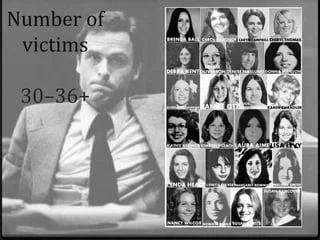
The details of Ted’s crimes were nothing short of horrifying. His victims, predominantly young women, were subjected to unimaginable brutality, their lives stolen in a whirlwind of violence and sadistic pleasure. His confessions revealed a deep-seated fascination with death and a perverse desire to exert control over his victims, even after they had taken their last breath. He admitted to engaging in necrophilia, revisiting the crime scenes to further abuse and mutilate the bodies of his victims.
The extent of Ted’s crimes, coupled with his chillingly calm demeanor and lack of remorse, painted a portrait of a psychopath devoid of empathy or compassion. His actions were not simply motivated by a desire to kill; they were fueled by a twisted need to dominate, humiliate, and exert power over those he deemed vulnerable.
A Twisted Path to Justice: Ted Bundy’s Trials and Verdicts
Ted’s trials were a series of legal battles that spanned several years and multiple states, culminating in his conviction and eventual execution. Each trial presented unique challenges and complexities, reflecting the evolving nature of forensic science and the legal system’s struggle to apprehend a cunning and manipulative serial killer.
1. Utah Kidnapping Trial (1976): Ted’s first trial took place in Utah in 1976, where he was charged with the aggravated kidnapping of Carol DaRonch. Despite his attempts to defend himself, he was found guilty and sentenced to 15 years in prison. This conviction marked the beginning of the legal unraveling of his carefully constructed facade.
2. Colorado Murder Trial (1977): While serving his sentence in Utah, Ted was extradited to Colorado to face charges for the murder of Caryn Campbell. During the trial, his arrogance and manipulative behavior were on full display. However, the evidence against him was overwhelming, including eyewitness testimony and forensic evidence linking him to the crime scene. He was found guilty and sentenced to death.
3. Florida Trials (1979-1980): Ted was subsequently arrested and faced trial in Florida the murders of the Chi Omega sorority house attacks and the murder of Kimberly Leach.
The Florida trials were highly publicized and closely watched by the nation. Ted acted as his own attorney, attempting to manipulate the proceedings and present himself as a victim of circumstance. However, the evidence against him was overwhelming, including eyewitness testimony, forensic analysis, and his own incriminating statements.
Ted was found guilty of the Chi Omega murders and sentenced to death. He was later found guilty of Kimberly Leach’s murder and received another death sentence. Despite numerous appeals and legal maneuvers, he was unable to overturn his convictions.
A Lack of Communication: How Jurisdictional Barriers Aided Ted’s Reign of Terror
One of the most chilling aspects of Ted’s case was his ability to evade capture for so long, despite the growing list of Ted Bundy victims and mounting evidence. A significant factor contributing to this was the lack of communication and coordination between law enforcement agencies across different states.
In the 1970s, information sharing between police departments was not as streamlined as it is today. There were no national databases for missing persons or criminal records, and communication between agencies often relied on slower methods like phone calls and written reports. This lack of centralized information hindered investigators’ ability to connect the dots and recognize the pattern of Ted’s crimes across state lines.
Ted exploited this weakness, traveling between states and changing his appearance to avoid detection. He would often strike in one state and then quickly move to another, leaving local authorities scrambling to catch up. By the time one police department had identified him as a suspect, he would be long gone, operating under a different alias and blending into a new community.
The lack of communication also led to missed opportunities for collaboration and information sharing. Investigators in different states were often unaware of the full extent of Ted’s crimes or the similarities between their cases. This prevented them from pooling resources and expertise, which could have potentially accelerated the investigation and led to his earlier capture.
It wasn’t until a nationwide network of investigators, including the FBI, began sharing information and collaborating on the case that the full scope of his crimes became apparent. However, by that time, he had already claimed numerous victims and left a trail of devastation across the country.
Behind Bars and on the Record: Bundy’s Prison Revelations and the Roots of His Darkness
During his years in prison, Ted became the subject of numerous interviews and psychological evaluations, offering a glimpse into the mind of a serial killer and the twisted motivations behind his horrific crimes. While he remained elusive and manipulative throughout these interactions, he did reveal certain insights that shed light on the factors that contributed to his dark desires.
One of the most significant revelations was his admission of a deep-seated addiction to pornography, particularly violent and degrading material. He described how his exposure to pornography at a young age fueled his fantasies and desensitized him to violence against women. Ted also spoke about his struggles with feelings of inadequacy and rejection, which he attempted to compensate for through acts of control and domination over his victims.
Another contributing factor was his troubled childhood, marked by a lack of parental guidance and a sense of isolation. He grew up feeling abandoned and misunderstood, which fostered a deep-seated anger and resentment towards the world. These feelings, coupled with his exposure to pornography, created a toxic brew that fueled his violent tendencies.
Ted’s interviews and confessions also revealed a disturbing lack of remorse or empathy for his victims. He often spoke of them as objects, dehumanizing them and minimizing the impact of his crimes. This chilling detachment highlighted the profound psychological damage that had warped his perception of reality and his relationships with others.
While his prison revelations provided some insight into the origins of his dark desires, they also raised more questions than answers. His manipulative nature and tendency to embellish or fabricate details made it difficult to discern the truth from his self-serving narratives. Nonetheless, Ted’s interviews and confessions served as a valuable resource for researchers and law enforcement officials seeking to understand the psychology of serial killers.
Ted Bundy and Carole Boone: A Twisted Love Story
Ted Bundy and Carole Ann Boone’s relationship began at the Washington State Department of Emergency Services, where they both worked. Carole Ann became infatuated with Bundy and remained loyal to him even after his legal troubles began.
I liked Ted immediately. We hit it off well… He struck me as being a rather shy person with a lot more going on under the surface than what was on the surface. He certainly was more dignified and restrained than the more certifiable types around the office. He would participate in the silliness partway. But remember, he was a Republican.
Carole Ann allegedly played a role in his 1977 escape from prison by providing him with money. Their bond deepened, culminating in a dramatic courtroom proposal during Ted’s 1980 trial for the murder of Kimberly Leach. Taking advantage of a Florida law allowing marriage declarations in front of a judge, the couple had an impromptu ceremony in the courtroom before the jurors and judge.
Rose Bundy: Ted Bundy’s Daughter
In 1982, while Ted was on death row, Carole Ann gave birth to a daughter named Rose. The circumstances surrounding Rose’s conception remain a subject of speculation, as conjugal visits were not permitted for death row inmates. It’s believed that Ted and Carole Ann found ways to be intimate during prison visits, with some accounts suggesting the involvement of prison guards.
Initially, Carole Ann declined to disclose the father’s identity, asserting it was a private matter. This statement garnered little attention at the time. However, the relationship between her and Ted eventually deteriorated. He became increasingly demanding and emotionally draining, placing significant strain on Carole Ann.
As Ted’s chances of avoiding execution diminished, he contacted Carole Ann, proposing to exchange information about undiscovered victims for more time. This indirect confession revealed his guilt and the existence of additional victims. The revelation deeply distressed Carole Ann, who was overcome with anger. Ted then requested to speak to their daughter, Rosa, but Carole Ann refused. This marked the end of their relationship, with no final farewell for Rosa.
The relationship between Ted Bundy and Carole Ann Boone is a perplexing tale of love, loyalty, and manipulation. She divorced Ted in 1986, three years before his execution, reportedly disillusioned with his manipulative nature. She moved with Rose to Washington state and changed their names to protect their identities. Little is known about their lives after Ted’s death, as Carole Ann maintained a low profile and shielded Rose from the media spotlight.
Ted Bundy Last Meal: A Refusal and a Standard Offering
Ted Bundy did not request a special last meal before his execution on January 24, 1989. In accordance with Florida State Prison protocol, he was offered the standard last meal provided to all inmates facing execution. This standard last meal consisted of: Steak (medium-rare), Eggs (over easy), Hash browns, Toast with butter and jelly, Milk, Coffee, and Juice.
Despite being offered this meal, Bundy reportedly did not eat any of it. His refusal of the last meal could be interpreted in several ways:
- Lack of Appetite: Facing imminent execution, Bundy may simply have not had any appetite for food.
- Defiance: Bundy might have refused the meal as a final act of defiance against the authorities and the system that sentenced him to death.
- Remorse or Resignation: Some speculate that Bundy’s refusal could have been a sign of remorse or resignation in his final moments, acknowledging the gravity of his crimes and the inevitability of his fate.
The true reason behind Bundy’s refusal remains a mystery, adding another layer of complexity to the enigmatic figure he was. Regardless of his motivations, the fact that he declined his last meal is a poignant detail in the final chapter of his life.
Ted Bundy Execution
On January 24, 1989, the curtain fell on the macabre saga of Ted Bundy as he met his demise in Florida’s electric chair, “Old Sparky.” The execution marked the culmination of years of legal battles, appeals, and desperate attempts to evade justice. As the current surged through his body, a final jolt of electricity extinguished the life of a man who had inflicted unimaginable pain and suffering on countless victims.
Curious about how Ted Bundy died? Find the details here.
A Legacy of Horror and Fascination
While serial killers existed before Ted Bundy, his case, with its widespread media coverage and the sheer brutality of his crimes, captured the public’s attention in an unprecedented way. The term “serial killer” became widely used and synonymous with Ted, solidifying the concept in the public consciousness.
His case remains one of the most infamous and studied in criminal history. His story has been the subject of countless books, documentaries, and films, exploring the psychology of a serial killer and the societal factors that contributed to his crimes. While Ted’s charm and intelligence made him a captivating figure, his horrific acts serve as a stark reminder of the depths of human evil and the importance of vigilance in protecting the vulnerable. It serves as a cautionary tale about the dangers of judging a book by its cover and the importance of recognizing the warning signs of potential danger.
Ted’s case also highlighted the critical importance of communication and coordination between law enforcement agencies, especially in cases involving serial offenders who operate across multiple jurisdictions. It spurred reforms in law enforcement practices and led to the development of national databases and information-sharing networks that have significantly improved the ability to track and apprehend criminals who cross state lines.
Moreover, the case sparked a national conversation about the potential dangers of pornography and the importance of addressing childhood trauma and mental health issues to prevent future violence.
Summary of Ted Bundy Crime Scenes: A Trail of Terror
Ted Bundy’s reign of terror spanned multiple states, leaving behind a series of chilling crime scenes that bore witness to his horrific acts. These locations, once ordinary and unremarkable, became forever associated with the darkness that lurked within the seemingly charming killer.
Chi Omega Sorority House (Florida State University): In the early morning hours of January 15, 1978, Ted broke into the Chi Omega sorority house, brutally attacking four young women and murdering two. The scene was a gruesome tableau of violence, with bloodstains, broken furniture, and scattered belongings marking the chaos of that night.
Lake Sammamish State Park (Washington): This picturesque park became a hunting ground for Ted in 1974. He abducted two young women, Janice Ott and Denise Naslund, within hours of each other. Their remains were later found in a secluded wooded area, leaving a haunting reminder of the danger that lurked beneath the park’s serene facade.
Taylor Mountain (Washington): The remains of several of Ted’s victims were discovered on Taylor Mountain, a remote area east of Seattle. This site, once a place of natural beauty, became a grim testament to Ted’s depravity, revealing the extent of his crimes and the pain he inflicted on his victims and their families.
University of Utah (Utah): Ted’s killing spree extended to Utah, where he abducted and murdered several young women in 1974 and 1975. The university campus and surrounding areas became a hunting ground for him, with victims disappearing without a trace, leaving behind a trail of fear and uncertainty.
Colorado State University (Colorado): Ted’s first known murder occurred in Colorado in 1975. He abducted and killed a young woman named Caryn Campbell, whose remains were found in a snowdrift months later. This marked the beginning of his cross-country rampage, leaving a chilling reminder of the evil that lurked beneath his charismatic exterior.
These are just a few examples of the numerous crime scenes left in Ted’s wake. Each location serves as a haunting reminder of the lives lost and the pain inflicted by a man who preyed on the innocent and vulnerable. These sites, once ordinary and unremarkable, will forever be etched in history as chilling monuments to the darkness that can reside within the human heart.
Ted Bundy’s IQ: A Misleading Measure of Intelligence
The IQ of Ted Bundy, the notorious serial killer, has been a subject of fascination and speculation. While some sources claim that he had an IQ of 136, classifying him as highly intelligent, it’s crucial to understand the limitations of IQ as a sole indicator of intelligence and the complexities of Ted’s cognitive abilities.
His academic achievements and manipulative charm often led people to believe he was highly intelligent. He studied psychology at the University of Washington and briefly attended law school, demonstrating a capacity for learning and intellectual pursuits. He was also known for his ability to manipulate and deceive others, which some might attribute to high cognitive skills.
However, focusing solely on Ted’s IQ score paints an incomplete and potentially misleading picture. Intelligence is a multifaceted concept, encompassing various cognitive abilities, including problem-solving, critical thinking, emotional intelligence, and creativity. While Bundy may have excelled in some areas, he clearly lacked in others, particularly emotional intelligence and empathy, which are crucial for understanding and connecting with others.
Furthermore, Ted’s impulsive and reckless behavior, disregard for human life, and inability to control his violent urges raise questions about the true nature of his intelligence. His actions suggest a profound lack of moral judgment and emotional maturity, which are essential components of overall intelligence and well-being.
While Ted Bundy’s IQ score might suggest high intelligence, it’s crucial to consider the broader context of his cognitive abilities and the complex interplay of factors that contributed to his disturbing behavior. Intelligence is not a one-dimensional trait, and focusing solely on IQ scores can lead to inaccurate and simplistic conclusions about an individual’s capabilities and potential.
The Ted Bundy Car: A Murderous Accomplice
Ted Bundy’s tan 1968 Volkswagen Beetle played a crucial and chilling role in his series of heinous crimes. The seemingly innocuous vehicle served as more than just transportation; it was a tool, a weapon, and an extension of Bundy’s sinister persona.
A Trap for Unsuspecting Victims: Bundy often used his car to lure unsuspecting women into his grasp. He would feign injury or disability, asking for assistance with his car or carrying books, luring victims close enough to overpower them. The Beetle, with its unassuming appearance, helped him maintain a facade of normalcy and disarm potential targets.
A Mobile Crime Scene: Once victims were incapacitated, Bundy used the Beetle to transport them to secluded locations where he could carry out his gruesome acts without interruption. The removed passenger seat and modified interior provided a chilling space for his crimes, concealing victims from public view.
A Repository of Evidence: Despite Bundy’s attempts to clean the Beetle, it became a repository of damning evidence against him. Investigators found hair and fibers matching several victims, along with other incriminating materials. This evidence ultimately linked Bundy to the crimes and played a pivotal role in his conviction.
A Symbol of Terror: The Volkswagen Beetle, once a symbol of freedom and fun, became associated with Bundy’s reign of terror. It represented the dark side of human nature and the vulnerability of women in society. The sight of a similar car would trigger fear and suspicion in many, reminding them of the horrors Bundy inflicted.
A Reminder of Justice Served: Following Bundy’s capture and conviction, the Volkswagen Beetle served as a reminder of his crimes and the justice that was ultimately served. It was displayed in various crime museums, including the Alcatraz East Crime Museum, as a chilling artifact of Bundy’s dark legacy.
Ted Bundy’s Volkswagen Beetle was far more than just a car. It was a tool of deception, a mobile crime scene, a repository of evidence, and a symbol of terror. Its significance in Bundy’s crimes is undeniable, reminding us of the darkness that can lurk behind the most ordinary facades.
Rich Bundy: Growing Up in the Shadow of a Serial Killer
Richard “Rich” Bundy, the younger brother of Ted Bundy, experienced a tumultuous childhood due to the shadow cast by his infamous sibling. Rich was just a child when Ted was first arrested, and like many, he initially believed in his brother’s innocence. The gradual revelation of Ted’s heinous crimes shattered this belief, leaving Rich grappling with complex emotions of shock, betrayal, and grief.
Despite the trauma and stigma associated with being Ted Bundy’s brother, Rich has chosen to share his unique perspective in several documentaries about Ted. He provides a rare glimpse into their shared upbringing, shedding light on the dynamics of their family and the early signs of Ted’s disturbing behavior. Rich’s participation in these projects offers a valuable contribution to understanding the complexities of growing up in the shadow of a serial killer and the enduring impact of such a traumatic experience.
Ted Bundy Interview: The Chilling Dialogue with Dr. James Dobson
In 1989, just hours before his execution, Ted Bundy gave a chilling interview to psychologist and evangelical leader Dr. James Dobson. This interview became infamous for its disturbing insights into Ted’s mind and the manipulative tactics he employed.
During the interview, Ted presented himself as a reformed Christian, expressing remorse for his crimes and attributing his deviant behavior to pornography. He spoke of how pornography had “corrupted” him and led him down a path of violence against women.
This narrative was met with skepticism by many, who saw it as a last-ditch attempt by Bundy to manipulate public opinion and portray himself as a victim. Critics argued that his focus on pornography deflected blame from his own actions and minimized the suffering of his victims.
The interview also revealed Bundy’s disturbing views on women and sexuality. He spoke of his victims as objects, dehumanizing them and minimizing the impact of his crimes. This further fueled public outrage and disgust, solidifying his image as a cold-hearted killer.
Despite the controversy surrounding the interview, it provided valuable insights into Ted’s psyche and the manipulative tactics he used to deceive those around him. It also served as a cautionary tale about the dangers of pornography and the importance of addressing underlying issues of violence and misogyny.
Similar “Serial killers” Stories
Top 20 Serial Killers Zodiac Signs
Richard Ramirez: The Night Stalker Who Terrorized California
Rodney Alcala: The Dating Game Killer
Ted Bundy Movies: A Cinematic Exploration of a Notorious Killer
Ted Bundy’s life and crimes have captivated audiences and filmmakers for decades, resulting in numerous movies and documentaries that attempt to unravel the enigma of this infamous serial killer. Here’s a look at some of the notable Ted Bundy films:
Watch “Ted Bundy: Mind of a Monster”
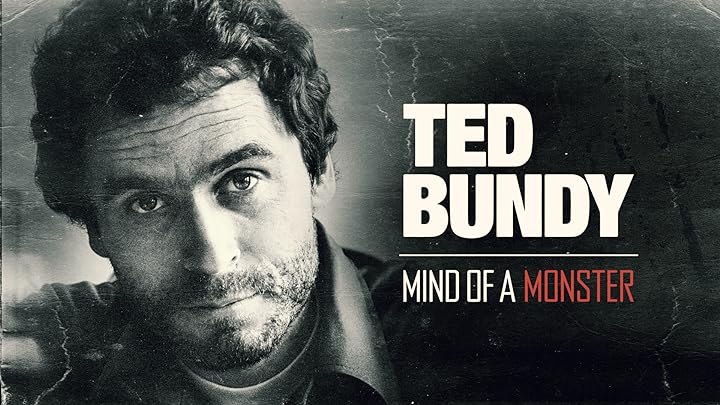
Unprecedented access and chilling, never-before-heard accounts offer a haunting glimpse into the psyche of Ted Bundy, America’s most infamous serial killer. Through captivating archival footage and Bundy’s own voice, the monstrous nature lurking within this seemingly ordinary man is exposed.
Watch “The Deliberate Stranger (1986)”

This TV miniseries, starring Mark Harmon as Ted Bundy, chronicles his life from his college years to his capture and trials. It explores his relationships, charm, and the dark side that led to his horrific crimes.
Watch “Ted Bundy Movie 2002”

This biographical film, directed by Matthew Bright and starring Michael Reilly Burke as Bundy, focuses on his manipulative nature and the psychological aspects of his crimes. It delves into his relationships with women and his ability to deceive those around him.
Watch “Extremely Wicked, Shockingly Evil and Vile (2019)”

Starring Zac Efron as Ted Bundy, this film takes a unique perspective by telling the story through the eyes of his girlfriend, Elizabeth Kloepfer (played by Lily Collins). It portrays Bundy’s charm and manipulation, leaving viewers to grapple with the unsettling question of how someone so seemingly normal could commit such heinous acts.
Watch “No Man of God (2021)”
This film focuses on the relationship between Bundy (played by Luke Kirby) and FBI analyst Bill Hagmaier (played by Elijah Wood) during Bundy’s final years on death row. It delves into their conversations and the psychological insights gained into the mind of a serial killer.
Read “A Light in the Dark: Surviving More than Ted Bundy”
In her memoir, “A Light in the Dark,” Kathy Kleiner Rubin courageously shares her harrowing experience as a survivor of Ted Bundy’s brutal attack on the Chi Omega sorority house at Florida State University in 1978. The book recounts the chilling events of that night, detailing the physical and emotional trauma she endured as a victim of Bundy’s violence.
Read “The Phantom Prince: My Life with Ted Bundy”

“The Phantom Prince” offers a unique perspective on Ted Bundy, recounting Elizabeth Kendall’s personal relationship with him and its gradual disintegration. While much has been written about Bundy, this intimate account provides a rare glimpse into the daily life of a man who concealed a monstrous secret.
FAQs
How old was Ted Bundy when he died?
Ted Bundy was 42 years old when he died. He was executed on January 24, 1989.
How many women did Ted Bundy Kill?
Ted Bundy confessed to killing 30 women across several states between 1974 and 1978. However, the exact number of his victims remains unknown and could potentially be higher.
Was Ted Bundy’s IQ high?
Ted Bundy’s IQ was reported to be above average, with estimates typically ranging between 120 and 130. This level of intelligence is considered higher than average, but it’s important to note that intelligence alone does not explain his criminal behavior.

